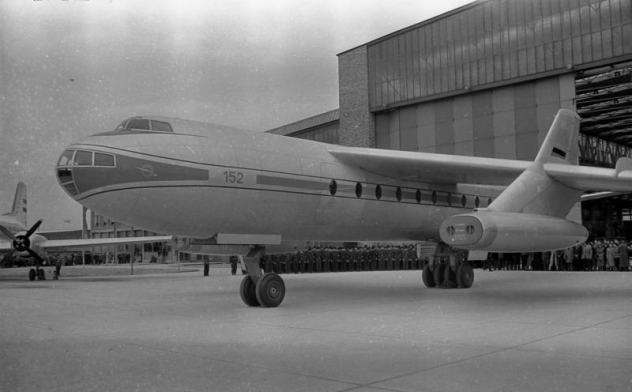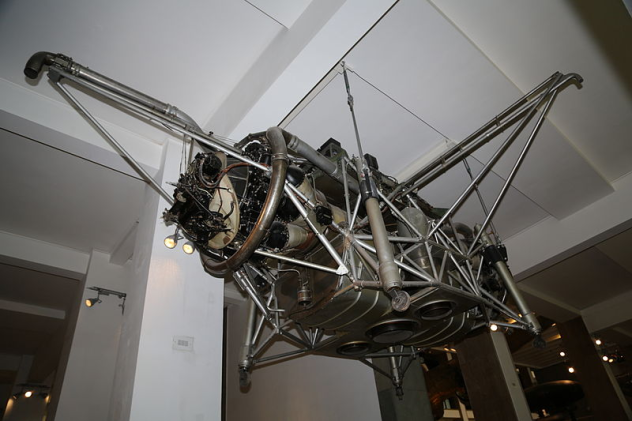 Mysteries
Mysteries  Mysteries
Mysteries  History
History 10 Surprising Stories About the Texas Rangers
 Humans
Humans 10 Philosophers Who Were Driven Mad by Their Own Theories
 Miscellaneous
Miscellaneous 10 Video-Game-Worthy Weapons and Armors from History
 Weird Stuff
Weird Stuff 10 Psychics Who Accurately Predicted Wartime Events
 The Arts
The Arts 10 Pieces of Art Inspired by a Broken Heart
 Health
Health 10 Science Fiction-Sounding New Medical Treatments
 History
History 10 Surprising Facts About the Father of Submarine Warfare
 Space
Space Ten Astonishing New Insights into Alien Worlds
 Weird Stuff
Weird Stuff 10 Bizarre Summer Solstice Rituals Still Practiced Today
 Mysteries
Mysteries Top 10 Haunting Facts About the Ghost Ship MV Alta
 History
History 10 Surprising Stories About the Texas Rangers
 Humans
Humans 10 Philosophers Who Were Driven Mad by Their Own Theories
Who's Behind Listverse?

Jamie Frater
Head Editor
Jamie founded Listverse due to an insatiable desire to share fascinating, obscure, and bizarre facts. He has been a guest speaker on numerous national radio and television stations and is a five time published author.
More About Us Miscellaneous
Miscellaneous 10 Video-Game-Worthy Weapons and Armors from History
 Weird Stuff
Weird Stuff 10 Psychics Who Accurately Predicted Wartime Events
 The Arts
The Arts 10 Pieces of Art Inspired by a Broken Heart
 Health
Health 10 Science Fiction-Sounding New Medical Treatments
 History
History 10 Surprising Facts About the Father of Submarine Warfare
 Space
Space Ten Astonishing New Insights into Alien Worlds
 Weird Stuff
Weird Stuff 10 Bizarre Summer Solstice Rituals Still Practiced Today
10 Of The Worst Jet Aircraft Of All Time
Jets capture nearly everyone’s imagination, and it’s not hard to see why. They’re fast and powerful, and they look really cool, so it’s no surprise that people are thrilled to see them. However, not every jet is an awesome airplane like the F-16. Indeed, hundreds of mediocre, if not outright terrible, jet aircraft have seen service. Here are 10 of the worst jets to take to the air. They failed for a variety of reasons, but the common thread is that nobody wanted to fly these turkeys.
10 Vought F7U Cutlass
Before being acquired by Northrop Grumman, Vought produced some of the United States Navy’s best-known and most successful fighters. During World War II, Vought designed the F4U Corsair, which saw service in the Pacific theater, and during Vietnam, naval aviators used Vought’s F-8 Crusader. In between, Vought produced a variety of unusual aircraft, chief among these being the F7U Cutlass. Designed to modernize the US Navy, the F7U ended up being a dangerous and unreliable airplane, ending the lives of many pilots through crashes and accidents.
The Cutlass was a unique design for the time, completely abandoning tail control surfaces in favor of a large swept-wing design inspired by wartime Messerschmitt experimental fighters. However, during testing, problems became obvious. Although the Cutlass was fast, it struggled to stay aloft in certain flight regimes and had huge problems with its engines. Powered by early Westinghouse turbojets, the Cutlass did not have enough thrust to perform well during takeoff and landing. The first three prototypes crashed, as did the first two airplanes delivered to the Navy. Still, the Cutlass went into full production. Pilots joked that Westinghouse toasters had more power than Cutlass engines.
Vought produced 320 examples of their futuristic fighter plane, but once they reached squadron service, reports of problems poured in. Squadrons could barely keep their fighters in the air due to their intense maintenance requirement and lost many planes due to takeoff and landing accidents. Overall, one-fourth of all Cutlasses in service were lost in accidents, and pilots gave the fighter unfortunate nicknames like “The Gutlass Cutlass” and “The Ensign Eliminator.” Most squadrons ditched the F7U in favor of older, more reliable fighters until something better came along. Despite the failings of the Cutlass, the Blue Angels flew two Cutlasses as part of a side demonstration at air shows. This is the only thing that the Cutlass really succeeded at.
9 PZL M-15
The Polish-designed PZL M-15 is one of the strangest-looking jets to ever go into production. Not only is it the only mass-produced jet biplane in history, but it is also the only jet crop duster to enter service. Soviet authorities in the 1970s felt a pressing need to replace the agricultural fleet of aging biplane crop dusters with something that was more economical and could also spray large collective farms more effectively. For years, Soviet farms used Polish agricultural planes, so the company PZL took responsibility for the new design.
Part of the requirement was that the new airplane had to use a jet engine, something that nobody had ever done. PZL built a test airplane to see if making a slow-flying agricultural jet was even possible. They found that given the right aerodynamics, the M-15 could fly at 161 kilometers per hour (100 mph) with a top speed of only 200 kilometers per hour (124 mph). When the M-15 entered service, it was the slowest jet ever produced. Because it was such a loud airplane, engineers nicknamed it “Belphegor” after the noisy demon in Christian mythology.
Unfortunately, the M-15 did not live up to expectations. Its engine guzzled fuel, making it more expensive than the old crop dusters. Having a jet engine increased the top speed over past crop-dusters, but not by much, and the M-15 ended up being a major disappointment. Out of the 3,000 examples ordered, PZL only delivered 175 before the Soviets pulled the plug on the project.
Interestingly enough, many NATO analysts believed that the M-15 had a more sinister purpose. Given its large tanks for pesticides, the M-15 was thought to be actually intended for chemical warfare against troops during a Soviet invasion of Europe. Whether or not that is the case remains unknown, but it’s more than likely the M-15 would have failed at that, as well.
8 Yakovlev Yak-38
When the Harrier Jump Jet entered British Naval service, other world powers saw the advantage of having a Vertical Take-Off and Landing (VTOL) fighter. The US license-built the Harrier for the Marine Corps, while the Soviet Union had to design their own unique fighter. Produced by the famous Yakovlev design bureau, the Yak-38 bore an outward resemblance to the Harrier but was an inferior airplane in every aspect. In fact, the Yak-38 ended up becoming one of the most useless naval airplanes ever put into service.
Despite the cosmetic similarities to the Harrier, the Yak-38 used a different lift jet system. Yakovlev engineers placed two small thrust vector jets at the end of the fuselage and two lift jets behind the cockpit. Due to differences in engine design, the Yak-38 used much more fuel than the Harrier during takeoff. This significantly limited the combat range of the Yak-38 to only 1,300 kilometers (800 mi), and that was without any weapons. In hot weather, the total possible flight time dropped to only 15 minutes, making the airplane completely useless as a fleet interceptor.
Beyond the dismal endurance, the Yak-38 suffered from engineering flaws and an overly simple design. With only four weapon pylons, pilots barely had any armament. To save weight, designers elected to not fit the Yak-38 with any radar beyond a rudimentary range finder, a huge disadvantage in modern aerial combat. Even if those systems had worked, the Yak-38 was still an absurdly dangerous airplane to fly. The lift jets only had a working life of 22 hours before needing a complete overhaul and were prone to failure if the intakes ingested too much gas. Losing just one lift jet doomed the airplane. To limit fatalities, Yakovlev fitted the fighter with an automatic ejection seat that would fire if the airplane rolled more than 60 degrees to either side during takeoff or landing. That system got good use.
7 Bristol 188

In 1947, Chuck Yeager broke the sound barrier in the X-1 and opened up a whole new possibility for jet flight. Soon, jets were pushing for faster and faster speeds, and the various air forces of the world needed research aircraft to test new flight characteristics. Unfortunately, most of these research planes ended in disappointment, but none failed as spectacularly as the Bristol 188.
This futuristic-looking airplane had a stainless steel fuselage to break Mach 2 speeds and test aerodynamics and equipment for the next generation of British fighters. RAF commanders wanted the Bristol 188 to spend a large part of its flight at Mach 2.6, where the skin of the airframe would reach 300 degrees Celsius (570 °F). Because of that difficult requirement, Bristol built the 188 with all-new techniques and fitted it with the most powerful engines available at the time. When completed, the Bristol 188 was a long, narrow airplane that earned the nickname “The Flaming Pencil.”
From the beginning, the Bristol 188 had problems. The fuel tanks had a hard time holding fuel and would leak during flight, severely limiting the flight time. Flying the test airplane was extremely difficult. The 188 had a takeoff speed of 480 kilometers per hour (300 mph), which is high for any airplane. To get in the air, the Flaming Pencil needed a very long runway, which only made the leaking fuel problems worse. Due to the difficulty of flying the plane, test pilot Godfrey Auty earned the superlative “most likely to eject in the coming year” from his fellow test pilots. The final nail in the coffin for the Bristol 188 was that it stubbornly refused to actually reach Mach 2, rendering the project completely useless. Engineers proposed various solutions to the speed problem, but by that time, the RAF had sunk £20 million into a useless airplane, and the government pulled the plug.
6 McDonnell XF-85 Goblin
For years, the various air powers of the world attempted to build parasite fighters. The idea was that bombers could also carry small fighter planes that would detach over enemy territory, fight off intercepting airplanes, and then re-dock with the mother ships to fly back home. Almost every attempt to build a parasite fighter system was unsuccessful. The only effective one was the Soviet Zveno system in World War II. The lack of success did not stop the United States Air Force from trying their own system with the XF-85 Goblin.
The Goblin was a diminutive and strange airplane, looking like a squashed F-86 Sabre. McDonnell removed everything nonessential from the fuselage to save weight, and the airplane had only the most rudimentary flight controls and avionics. During testing, the Goblin was carried aloft by a modified B-29 bomber. If the Goblin worked out, it would be fitted to larger bombers like the B-36 to defend them in missions over Soviet targets.
Unfortunately for McDonnell, the Goblin was a colossal failure. Although the airplane was extremely stable, it did not have the performance capabilities necessary for its mission. With only four .50-caliber machine guns and a small engine, the XF-85 could be outgunned and outmaneuvered by the Soviet airplanes that it would be going up against. The airplane also proved impossible to dock with its mother ship. On the first test flight, pilot Edwin Schoch was unable to catch the trapeze mechanism on the B-29 mother ship. At the end of the test, he collided with the trapeze, shattering his canopy and tearing off his helmet. Schoch made an emergency crash landing on a dry lake bed, since the XF-85 was not fitted with landing gear. Due to the difficulty of the docking maneuver and weak performance figures, the USAF canceled the XF-85 and moved on to other outlandish parasite fighter ideas. None of them worked.
5 Baade 152

Although Germany had the lead in jet-powered aircraft during World War II, the German aviation industry’s destruction and slow postwar recovery meant that the Germans initially lagged behind other world powers in developing postwar jet aviation. The first jet airliner flew in 1949, but it was not until 1956 that German aircraft designers began work on their own jet airliner. East German engineers who formerly worked for the Junker company developed the Baade 152 airliner for service. It was a historical first, but it wasn’t a very good aircraft.
Junker engineers designed the 152 as an airliner but based it on a series of bomber concepts that they had developed in the late 1940s. As such, the 152 did not look very much like an airliner. It used a high-wing design and had unusual center-line landing gear with outrigger wheels on the wing tips, similar to the American B-47. These two features were good for bombers but bad for passenger planes, since the configuration barely left any room in the fuselage for passengers.
On the second test flight, the prototype 152 was lost in a crash, killing the entire crew. The engineers made significant changes on the second prototype, completely redoing the landing gear configuration and changing the engine fairing. After three flights, the crews discovered that when the 152 made a steep descent, the fuel lines failed, and the engines stopped running. Testing ground to a halt, although 20 airframes were in various stages of construction. By 1961, East Germany dropped the project, and the head engineers defected to the West. The state airline elected to fly a Soviet design, effectively ending the East German aviation industry. The 152 remains the only indigenous airplane of East Germany.
4 Tupolev Tu-144
Supersonic airliners were all the rage in the 1960s and 1970s. The British and French developed the well-known Concorde, and the Soviets developed the nearly identical Tu-144. When the Concorde entered service, the Americans did preliminary work on a supersonic airliner that was never built. Between the two supersonic airliners in service, the Tu-144 was undeniably the worse. In fact, it was one of the worst airplanes ever put into production.
Tupolev flew the Tu-144 two months before the Concorde took flight. Their similarities are mainly cosmetic, as the Tu-144 used a completely different engine setup and control scheme. Conspiracy theories persist about this. Some have alleged that the Concorde team knew the Soviets would steal their blueprints and purposefully tricked them into stealing blueprints with huge design flaws. Whatever the case, the Tu-144 was unique enough to be called its own airplane.
From the outset, the Tu-144 had issues. The first passenger prototype suffered a highly public crash at the 1973 Paris Air Show. Still, the Soviets pushed ahead with the project and started commercial service. After a few flights, engineers discovered that two airframes were at risk of complete structural failure, while other airplanes suffered extremely low reliability. On some flights, 22 out of 24 main systems failed while in the air, and Soviet authorities decided to limit the amount of people per flight to 70–80 in case a crash occurred.
The airplane was so bad that the Soviets actually approached Western airspace companies for help with fixing the problems. After only 50 commercial flights, Aeroflot discontinued passenger service, and the Tu-144 was relegated to cargo transport. After another 50 flights, Aeroflot grounded all airframes. Interestingly enough, NASA decided to buy a Tu-144 as a test vehicle for supersonic airliner research. In this capacity, the Tu-144 served effectively.
3 Dassault Balzac V And Mirage III V
If we learn one thing from this list, it’s that most of the time, VTOL fighter planes are bad ideas. As the British were developing the Harrier in the late 1960s, the French began work on their own VTOL fighter. However, instead of taking the British approach and designing a whole new airframe, the French elected to modify their successful Mirage III fighter with lift jet engines. The idea seemed good on paper but was an utter disaster in practice.
To get some experience with a lift jet design, Dassault modified one of the original Mirage III prototypes with eight lift jet engines. Named the Balzac V, the plane had a promising start, transitioning from vertical takeoff to horizontal flight in March 1963. A few months later, disaster struck. During a landing, the Balzac V flipped over and killed the test pilot. Dassault rebuilt the prototype and continued testing. In 1965, an American pilot on exchange conducted a test flight but died when the lift engines cut out and he did not eject successfully.
Despite the deaths, the project continued with the purpose-built Mirage III V, which was just a standard Mirage III airframe with lift engines, just like the Balzac V. Also just like its predecessor, the Mirage III V had a promising start, completing flights where it took off and landed vertically and achieving Mach 2 during horizontal flight. Oddly, these two feats never occurred in the same flight. Even though it was initially successful, disaster struck again when the Mirage III V prototype crashed. At least the pilot survived this time, but Dassault finally decided that the VTOL thing was not really working out and moved on to other projects.
2 De Havilland Comet
De Havilland propelled the United Kingdom into the future with its Comet airliner in 1949. The project was years in the making, and the sleek Comet thrilled the public when it made its debut. Using cutting-edge aeronautical research, the Comet was the world’s first jet-powered airliner, promising a whole new experience of speed and comfort for travelers. The Comet itself was a beautiful airplane, and British airline companies clamored to put the new airliner into service.
Unfortunately, the Comet was too far ahead of its time. Engineers did not have enough understanding of how to design a jet airliner. Their oversight doomed the project and killed dozens of passengers. The first Comet accident occurred in 1952, when a British Overseas Airways Corporation (BOAC) flight was unable to take off and ran off the end of the runway. No passengers died, but the airframe was irreparably damaged. A few months later in 1953, a flight in Pakistan had the same problem, but when the airplane overran the runway, it collided with an embankment, killing all 11 people onboard. This was the first fatal jetliner accident. De Havilland clamored to find out what was wrong with the plane, but while they were investigating, a second fatal crash occurred when a Comet broke apart in midair on a takeoff from India, killing all 43 onboard.
Just over a year later, disaster struck twice in 1954. On January 10, a BOAC flight suffered explosive midair decompression and plunged into the ocean, resulting in 35 fatalities. In April, a Comet crashed in the Mediterranean, causing 23 fatalities. Comet production was immediately halted as investigations scrambled to find out what happened. Early theories included sabotage. However, further investigation discovered that the problem was in the passenger windows. Early Comets had square windows, which were subject to extreme fatigue at high speeds, causing buckling of the fuselage. It was a simple design flaw but one that doomed the early Comet flights.
De Havilland scrambled to redesign their airplane with circular windows, but by that time, the damage was already done. The crashes ruined the Comet’s reputation, and lengthy investigations allowed the Americans to catch up with jetliner design. Unfortunately, the biggest influence of the Comet was showing other companies how not to design jetliners and improving the practice of airline crash investigation.
1 Rolls-Royce Thrust Measuring Rig

Just by looking at this airplane, you can tell that it was absurdly dangerous. The Rolls-Royce Thrust Measuring Rig (known colloquially as the “Flying Bedstead”) tested the feasibility of VTOL aircraft. It may not look like much, and that is because the Flying Bedstead was just two jet engines attached to a small frame. The airplane had no inherent stability. Rolls-Royce did not fit it with any sort of fuselage, wings, or control surfaces—just fuel tanks and engines with a pilot placed on top.
The two jet engines used thrust vectoring to control the Flying Bedstead. Unfortunately, the early engines did not have a very good throttle response, meaning that the pilot had to anticipate when he would need to move seconds in advance so that the engines could spool up to a new power setting. This made the Flying Bedstead nearly impossible to control, since quick changes to engine thrust were impossible. Early tests were always done tethered, as Rolls-Royce felt that it was too dangerous to fly the airplane otherwise.
Finally, untethered tests commenced. It was soon very clear that the Flying Bedstead VTOL technique was not going to work out. The airplane was ungainly and extremely difficult to fly. Tragedy struck in 1957 when the Flying Bedstead rolled over and crushed the pilot, who had only a rudimentary roll cage to protect him. Rolls-Royce quit testing after the fatality and investigated other forms of VTOL engines that would eventually lead to the Harrier.
Zachery Brasier is a physics student who likes to write on the side and is very interested in aviation history.








